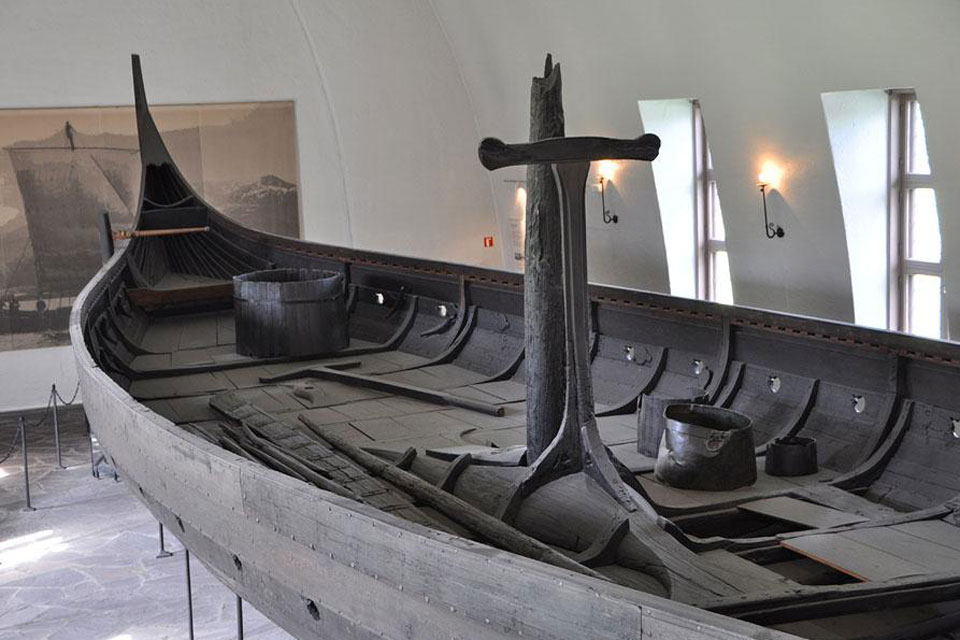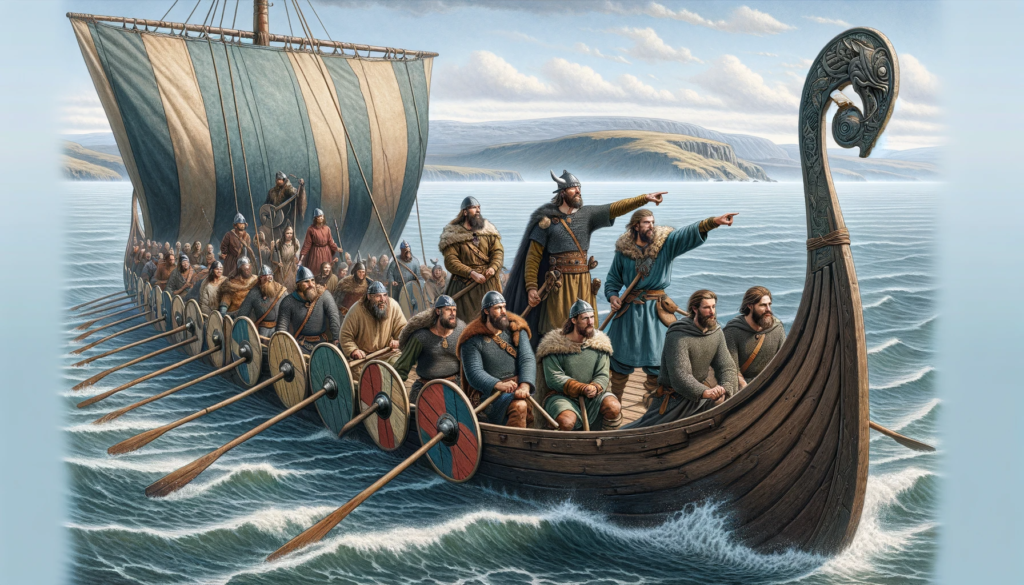
The Vikings were one of the most dominant forces in Western Europe from the 9th until the 11th centuries.
As well as building strong nations with fertile trading relationships in the East, they raided France and Spain for their riches, set themselves up as lords in England and Ireland, settled Iceland, Greenland, and the Orkney Islands, and even set up outposts as far away as Canada.
One of the main reasons that the Vikings were able to achieve this was the technology of their ships, which was different to what was being used elsewhere in Europe at the time.
They were faster, could sail into shallow waters, and were light enough to be carried over land. However, they were also much more dangerous than other European ships and required expert skill to sail.
So, let’s take a deep dive into the Viking longship, what it is, and why it was so special.
Read about the burial of ships in bogs in Scandinavia in the pre-Viking age here.
Viking Ships

The Vikings were a seafaring people, and they built many different types of ships from small fishing boats to ferries for transporting goods, and their infamous longships, which were basically warships.
Designs, styles, and details differed across the Viking world and changed over time. For example, originally all Viking longships were made from oak, which is strong and excellent for seafaring.
But it is estimated that it would have taken about three oak tree trunks to construct just one Viking longship. Therefore, in the 10th century, while the Danes were still using oak, the Norwegians and Swedes were using pine.
There is also no evidence that the Vikings had written diagrams or standard plans for constructing their ships. It was an art learned from experience, and passed from master craftsman to apprentice, usually a son, over years of working together.
That said, Viking longships share a few distinctive features, some of which appear in the region as early as the fourth century BC.
Characteristics of the Viking Longship

The main characteristic of Viking longships is that they had a long, narrow design. Exactly how long depended on how many rowing benches they had.
The smallest surviving longships had only six (on one side), though some scholars only classify ships with 13 or more banks as longships.
To be useful in war, a longship needed at least 20 banks. This would mean that it could carry a crew of 41, that’s 40 rowers and the cox who steers the ship.
Most surviving Viking longships are around this size and were around 55 feet long and 8 feet wide. They were called Snekkja.
There were also larger ships called Skeid which would have 30 rowing benches on each side. The longest of these discovered is known as Roskilde 6, which was 121 feet long and dated to around 1025. There are stories in the sagas of even bigger ships, but none have yet been found in the archaeological record.
As well as being long, Viking longships were shallow. Most had a maximum draught (maximum depth it sinks under the water) of 0.5-1 meter. This meant that they could sail down rivers considered unnavigable by other ships and show up at the gates of cities that did not think they needed river defenses.
The ships were also very lightweight, which meant that the crew could carry them across land between sailable bodies of water. There is also good evidence that they turned their ships upside down and used them as shelters when on land.
Comparison with Other European Ships

How did Viking longships compare with other European ships being used at the time? Most other Europeans were making ships with bluff bows. This means that the bottom of the ship looks like a barn door curved into a semicircle.
This made for much slower ships, since the bluff blows resist the water, rather than cutting through it, like Viking ships and modern ships.
Other Europeans also built their ships tall, with superstructures ascending from the stern and bow. Having so much hull above the waterline meant that there was a lot of windage to be battered.
When it comes to drought, so below the water, other European ships had deep holds, round bilges, and deep drafts.
This prevented these ships from entering the same shallow waters as the Vikings.
However, these European designs did lead to safer ships, that were less likely to be battered around and less likely to be inundated by waves during a storm.
The low draught and windage left the Viking ships much more vulnerable to these hazards. And while they could navigate shallower waters, it took an expert to avoid underwater hazards that could damage the ship.

In addition to this, the design of Viking ships meant that they had minimal storage for transporting goods and no protected places to sleep.
The evidence suggests that when sailing close to the shore, the Vikings parked up and camped on land. When they couldn’t go ashore, they had to sleep exposed on the deck under animal skins.
This would have been unpleasant, which makes the fact that the Vikings sailed between Greenland and North America even more impressive. It would have meant between two and six weeks at sea.
The Vikings, of course, knew about other European ship technology because they had seen it. They seem to have preferred their faster and more versatile ships, even if they were more dangerous.
Learn more about Viking sea trade here.
Longship Construction Methods

The boats were made from long planks of timber, usually oak, that were laid overlapping and nailed together. They were made watertight by filling the spaces between the planks of wood with wool, moss, or animal hair mixed with tar or tallow. This type of construction is known as clinker or lapstrake construction.
Three-inch iron rivets and round iron washers were used as fasteners. Wooden treenails that swelled up when wet were also used; these were preferred because they were stronger. A treenail was essentially a wooden dowel crafted to fit a bored hole like a bolt.
The strakes were attached to ribs that were in turn attached to a narrow keel running fore and aft down the centerline of the hull. The strakes of the ship were much thinner than most people realize, often only 0.78-1.18 inches thick.
Some Viking longships were decorated to look like a dragon or a sea snake, with a vicious head carved at the front of the ship. These were called Drakkar and must have been a fearsome sight on the horizon. Coastal villages would have known that the ships were full of Viking raiders.
Sailing Vikings Ships

Viking longships had wind sails. It is believed that most used one large, square sail made from wool that was crisscrossed with leather strips so that it would retain its shape when wet.
The ships also had oars for rowing. There were holes on each side for the oars to slide in and out of so that they could easily be deployed and returned.
This is what indicates how many rowing benches were in a ship since many ships don’t seem to have had actual benches. Instead, the rowers probably sat on their personal sea chests. This would have saved a lot of room on the boat.
Oars weren’t all the same length. On one ship, oars were found to range from 17-19 feet in length. This is to accommodate the slight bulge in the middle of the ship. Here shorter oars would have been used, and longer ones at the front and back.
Yes, it is also true that the Vikings hung their shields on the side of the boat next to their rowing stations. They could act as protection against arrows while rowing up to a conflict. It was probably also a useful place to store them on a ship that didn’t have that much storage space.
You can learn more about how the Vikings approached navigation here.








